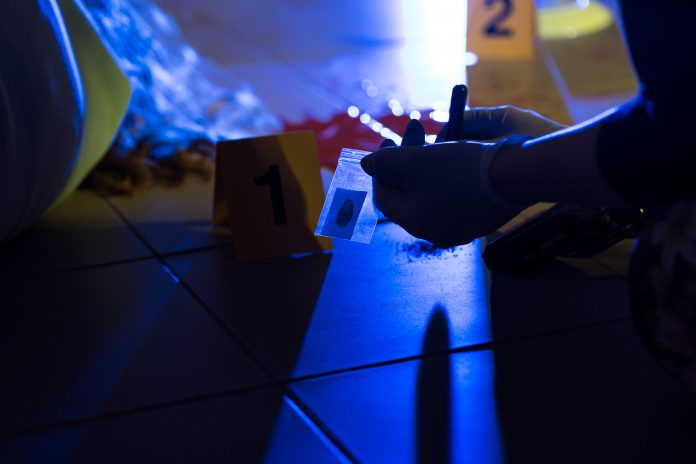National Institute of Justice forensic science research is strengthening the fair and impartial administration of justice, explains Jonathan McGrath, Senior Policy Analyst, National Institute of Justice, Office of Investigative and Forensic Sciences
Rapid DNA technology – to develop a DNA profile in 90 minutes and identify a serial perpetrator.
Postmortem CT imaging – to clearly visualise gunshot wounds or blunt force trauma for death investigations.
3D Virtual Microscopy – to revolutionise firearms examinations by providing high-resolution, digital images for quantitative, objective evidence.
These technologies may sound like the fictional tools in the latest television shows that solve crimes in less than 60 min of airtime, but these technologies do, in fact, exist today because of the forensic science research and development (R&D) efforts of the National Institute of Justice (NIJ).
A small but mighty research agency
Located within the U.S. Department of Justice’s Office of Justice Programs, NIJ is the research, development, and evaluation agency of the DOJ. NIJ’s motto is “Strengthen Science. Advance Justice” and NIJ has three goals related to forensics:
- Improveourunderstandingoftheaccuracy,reliability, and validity of forensic disciplines.
- Increase the body of knowledge to guide forensic science policy and practice.
- Producenovelandusefulmaterials,devices,systems and methods.
NIJ uses a “Listen, Learn, Inform” approach to develop its initiatives. NIJ’s research and development process starts with “Listening” to the operational needs of the forensic science practitioner community to identify and prioritise research needs. In the U.S., forensic science services for DNA, drugs and toxicology, computers and cell phones, latent prints (finger and palm prints) as well as crime and death scene investigation and autopsy, are provided by over 400 public crime labs, over 2000 medical examiner and coroner offices and countless police forensic units.
Based on the research needs, NIJ builds a comprehensive forensic science research agenda to “Learn” the answers to address those needs through three major funding opportunities (see sidebar). On average, NIJ funds 48 forensic R&D projects with $21 million annually, for a total of over 600 projects and $270 million since 2009. NIJ “Informs” the criminal justice community by supporting research dissemination through scientific publications, presentations and technology transition activities that facilitate implementation of research findings into operational practice.
NIJ routinely publishes “The Impact of NIJ Forensic Science Research and Development,” including measurements of grantee publications, citations, and patents. These outcomes contribute to innovative solutions, such as methods to identify and track novel psychoactive substances and provide early warning systems to combat the opioid crisis; “molecular autopsy” techniques to identify genetic variants that improve our understanding of sudden deaths; next generation sequencing techniques for DNA analysis; techniques to improve bruise detection across all skin tones – critical for corroborating injuries from sexual assault or domestic violence; and even new uses of “touch DNA” analysis for groping cases. Several NIJ awards have resulted in forensic databases, important for casework and research purposes. Free and open access to such datasets helps support the accuracy, reliability and transparency of forensic results. NIJ spreads the word on these research products through its annual NIJ Forensic Science R&D Symposium.
Administration of justice: from research to practise
To advance the implementation of emerging technologies and innovations into practice, the NIJ Forensic Technology Center of Excellence (FTCOE) supports technology transition and knowledge sharing through reports, webinars, and events, including the nearly 200 Just Science podcast episodes. All FTCOE products are no-cost to forensic and criminal justice system practitioners, as well as the public.
As a leader in evaluating what works, NIJ develops best practices for the forensic science community, including:
- National Best Practices for Implementing and Sustaining a Cold Case Investigation Unit.
- Best Practices in Novel Psychoactive Substances Testing for Laboratory Practitioners.
- National Best Practices for Sexual Assault Kit: A Multidisciplinary Approach.
- The Fingerprint Sourcebook.
- Death Investigation: A Guide for the Scene Investigator (update anticipated in 2022).
Driving forensic science research forward
Later this year, NIJ will publish its inaugural “Forensic Science Strategic Research Plan” to define the challenges and opportunities that drive its research agendas. This plan will articulate five strategic priorities:
- Advancing applied R&D in forensic science.
- Supporting foundational research in the forensic sciences.
- Maximising the impact of forensic science R&D.
- Cultivating a diverse, highly skilled forensic science workforce.
- Coordinating across the community of practice.
While there is no dedicated annual appropriation for forensic science research, NIJ maximises limited research funding to ensure that forensic science practice continues to evolve to address the needs of the criminal justice system community. Forensic science R&D continues to make its mark to strengthen the criminal justice system by providing innovative tools to advance the fair and impartial administration of justice.











